Enjoy a delicious British syrup steamed pudding for the ultimate winter treat. In the United States, 'pudding' may mean something else. However, this dessert is a heavenly mix of light, moist sponge topped with sweet, sticky syrup.
Start by spooning syrup into the buttered bottom of a pudding basin. Then, add the quick and easy sponge batter. In just 5 minutes, whip up a mixture of butter, flour, sugar, and eggs. No need for a stand mixer - starting with softened butter ensures an easy creaming process.
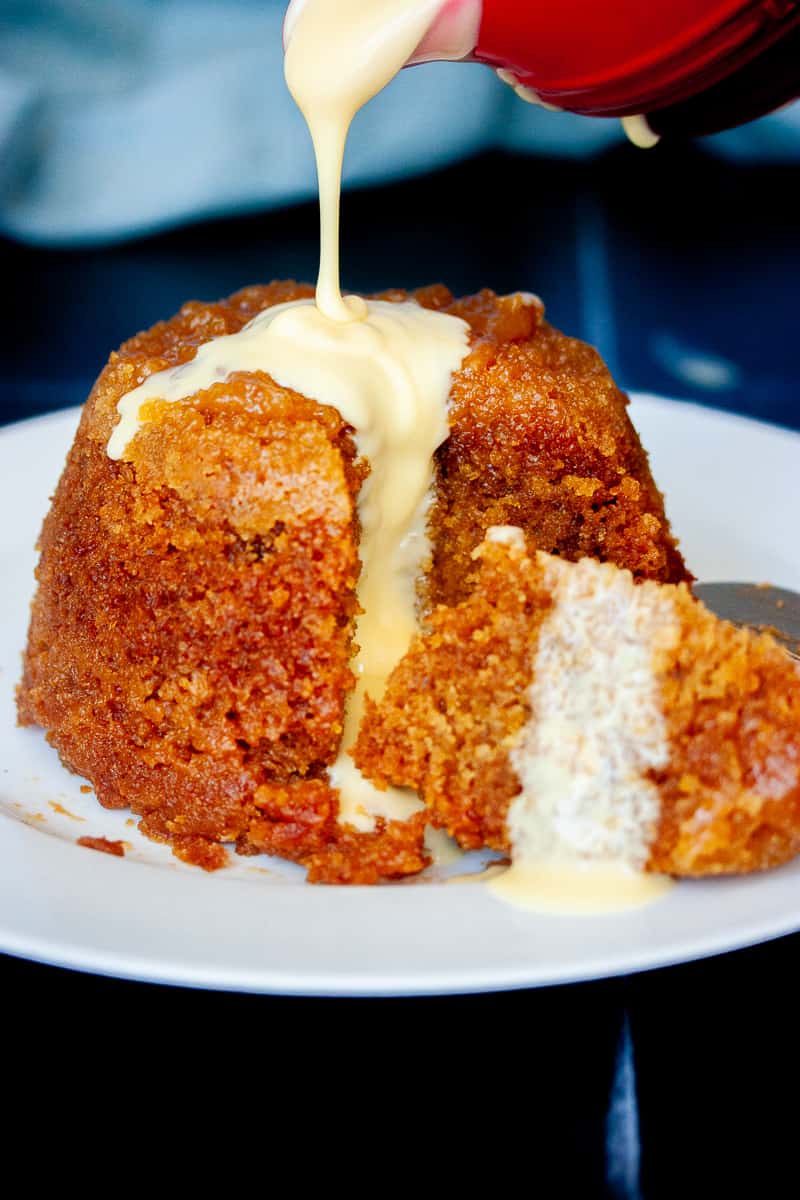
Syrup steamed puddings are cooked entirely on the stovetop over a pan of simmering water. No oven required. After steaming, we turn the pudding out, revealing a gooey, syrupy top and a fluffy base.
Remember to start early, allowing the pudding to simmer for about 2 hours. Serve this classic winter delight with custard or cream for an indulgent treat.
Does anyone else remember the steamed puddings that Heinz used to offer in cans?
❓FAQ
A pudding basin is a deep ceramic bowl, wider at the top than the base, made for easy sealing with a cover using string. It has a step down at the side which helps hold string in place. If you don't have a pudding basin, a glass or ceramic bowl can work, though securing the cover might be a bit trickier.
Certainly! If you lack a steamer, simply place the pudding basin on an upturned small plate in a large saucepan. Pour hot water around the sides so that it comes about ⅔ of the way up the basin. Simmer for 2 hours with the saucepan lid on, topping up the water as needed every 20-30 minutes. Enjoy your homemade steamed pudding!
We've all done it. The recipe says to use softened butter. But you forgot to get the butter out of the fridge ahead of time. How can you soften butter quickly and effectively? Here are some ideas:
1) Pour hot water into a ceramic or glass cup or bowl (something that can fit over your butter). After a few minutes, dump the water out of the vessel and quickly cover your butter. The heat from the cup will soften your butter in just a few minutes.
2) Grate the butter on the coarse holes of a box grater. The warmth from your hands as you grate and the small pieces will speed up softening.
3) Put the butter in a small bowl and use your fingers to knead and squish it. It will soften up in no time.
🥘 Ingredients
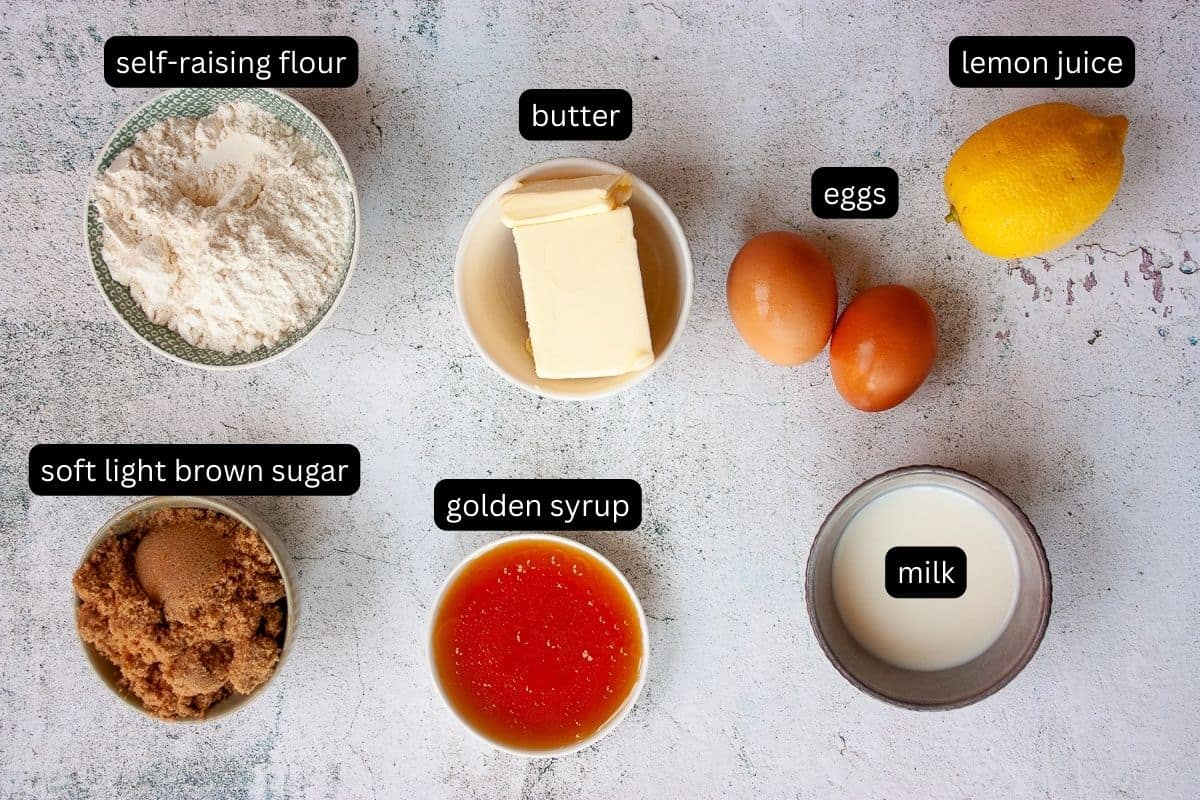
Soft Light Brown Sugar - gives the sponge a subtle caramel flavour without competing with the syrup itself.
Butter - adds richness and fluffiness. Some traditional puddings use suet (beef fat).
Lemon - lemon added to the syrup stops this dessert being sickly sweet - it's just the right amount of sweet.
Self-Raising Flour - this is plain/all-purpose flour that already has raising agents added for convenience. This way you don't have to add them separately. If you don't have, replace with the same amount of plain/AP flour and add 1 ½ teaspoons of baking powder.
Golden Syrup - is a thick, amber-coloured form of liquid sugar. It has an appearance and consistency like honey but has a more neutral sweet flavour. I'm aware that golden syrup is not readily available in the US. I haven't tried any alternatives but check out this link for substitution suggestions. Or you can use a fruit jam instead. This is another classic version of steamed pudding.
Milk - used to loosen the batter a tad. Use whole milk for the richest flavour, but any type of milk will work here.
🔪 Instructions
Use your fingers to rub softened butter around the inside of the pudding basin. This will ensure the pudding turns out in one piece. Combine the syrup and lemon juice at the bottom of the bowl. I set the basin on weighing scales and weigh the syrup straight in. Even better if your syrup comes in a squeezy bottle!
Make a pleated baking paper and foil cover.
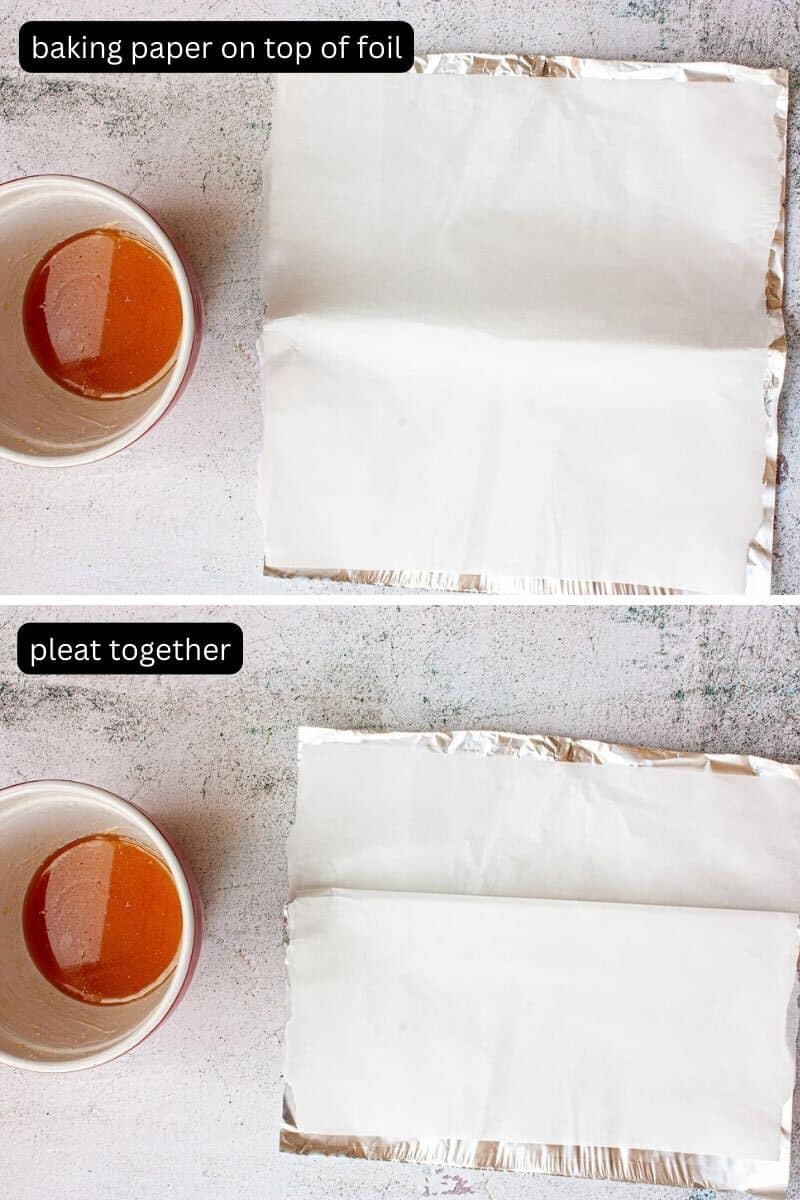
Cream butter and sugar together in a bowl with a pinch of salt until well combined and a little fluffy. Add whisked eggs a little at a time until well combined. Don't worry if the mix ends up looking a little curdled at this point (as it does in the photo below) - it will come good when we add the flour.
Sift in the flour to help incorporate air for a light, fluffy sponge. Fold gently in using a silicone spatula and add enough milk to make a batter with a dropping consistency rather than a runny pouring consistency.
Spoon this batter into the pudding basin. The syrup will come up the sides. Level the top gently with a spoon.
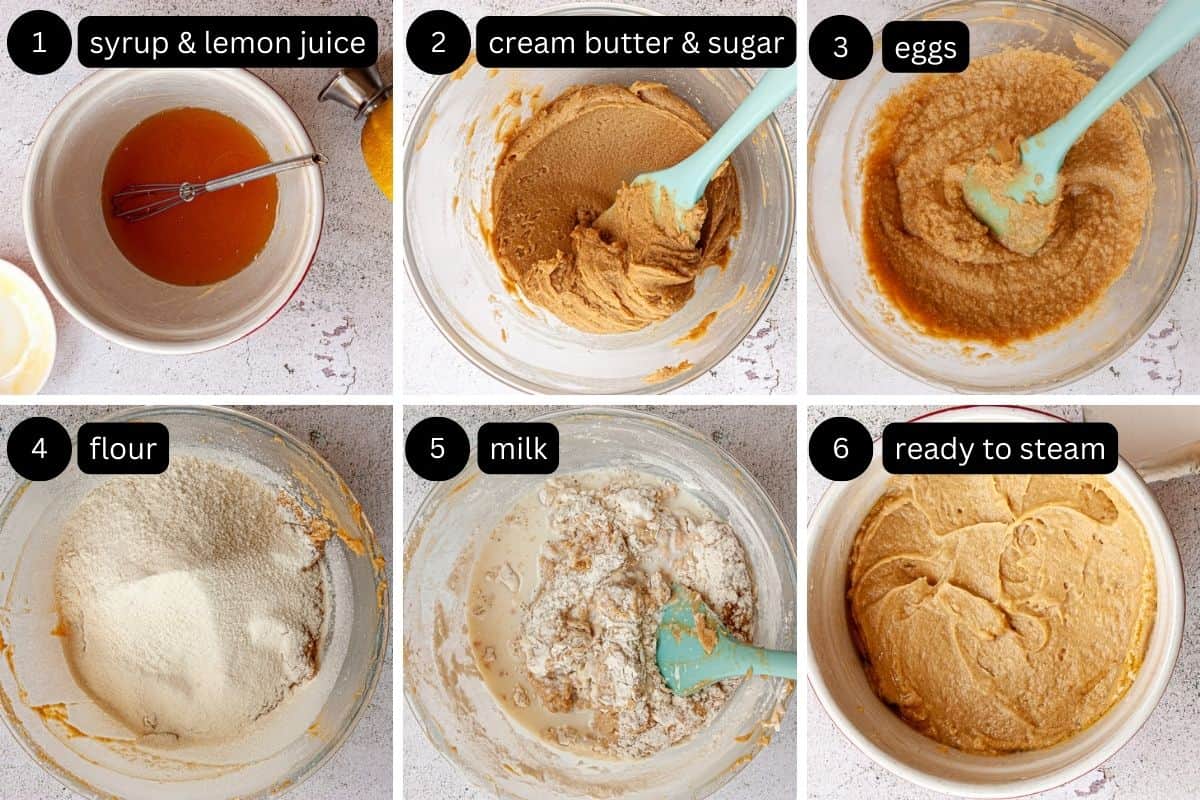
Cover the pudding basin with the paper and foil cover and secure with string around the lip of the pudding basin. Create a string handle so that you can easily lift the pudding out of the steamer once it's cooked.
Place the basin in a deep steamer. Put the lid on and set over a saucepan of simmering water. Simmer for around 2 hours. Check the water level every half hour or so and top up the water if its threatening to boil dry.
To Serve: lift the pudding out of the steamer. Cut off the string and remove the foil and paper cover. Run a knife around the edge of the pudding and turn out onto a plate. Cut into wedges to serve immediately with custard or cream poured over.
This recipe is Felicity Cloake's 'How to cook perfect syrup sponge'.
📖 Recipe
Equipment
- 900ml pudding basin/or bowl (note)
- cooking twine/string
- steamer (note)
- baking paper
- foil
Ingredients
- Butter for greasing (about 10g)
- 90 ml golden syrup (6 tablespoons)
- Tablespoon lemon juice
- 150 g unsalted butter
- 150 g soft light brown sugar
- Pinch salt
- 2 eggs
- 150 g self-raising flour (note)
- 75 ml milk (5 tablespoons)
To Serve:
- Custard (hot or cold, or cream)
Instructions
- Grease Pudding Basin - rub a little softened butter around the inside of the pudding basin using your fingers.Butter for greasing
- Prepare Cover - cut/tear off a square of baking paper big enough to generous cover the top of the pudding basin. Cut/tear off a similar size piece of foil. Lay the foil square on top of the paper. Pleat in the middle to create some space for the pudding to rise. Set aside for now.
- Syrup - add the syrup and lemon juice to the bottom of the pudding basin and stir together.90 ml golden syrupTablespoon lemon juice
- Cream Butter & Sugar - place the very softened butter with the sugar and salt in a large bowl. Beat with a flexible spatula until well mixed and a bit fluffy.150 g unsalted butter150 g soft light brown sugarPinch salt
- Eggs - break the eggs into a small bowl and lightly whisk together using a fork or hand whisk. Gradually add to the creamed butter and sugar. A slightly curdled appearance is fine.2 eggs
- Flour & Milk - sift the flour over the eggy mix. Fold in the flour using a silicone spatula, followed by the milk. The mixture should be soft enough to fall off a spoon. Add a touch more milk if the batter is too stiff.150 g self-raising flour75 ml milk
- Spoon into Basin - spoon the batter into the basin and gently smooth the top to even out.
- Secure Cover - cover the basin with the foil uppermost. Secure around the lip of the basin with string. Make a string handle with a doubled-up length of string tied at opposite sides of the basin. Turn the foil and paper back on itself under the string.
- Steam - set the basin in a steamer deep enough to be able to take the basin and top with a well-fitting lid. Set the steamer over a saucepan of simmering water. The water doesn't have to touch the bottom of the steamer. Steam the pudding for 2 hours. Every half hour or so, check the water level in the saucepan and top up as necessary to stop the water boiling dry. You can weigh the lid down with something heavy if need be.
- Serve - using the string handle, carefully lift the pudding out of the steamer. Cut the string and remove the layers of foil and paper. Run a knife around the inside of the basin. Place a plate over the top and and turn out onto a plate. Serve immediately with custard or cream.Custard

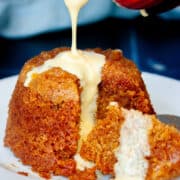
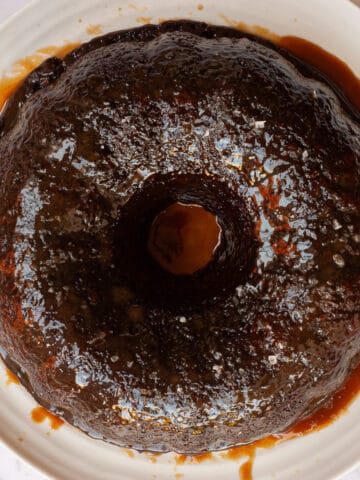
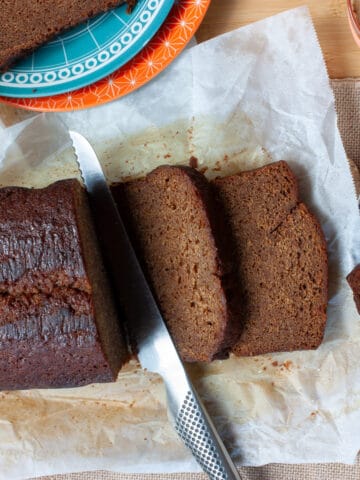




Comments